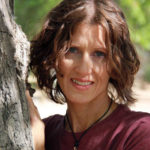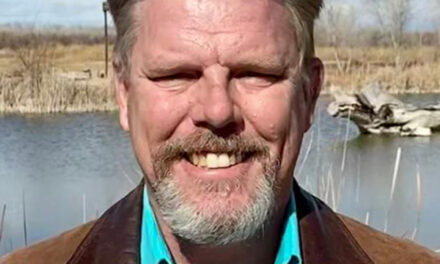They climb up ropes like spiders, leap from branch to branch like squirrels, and float to the ground like feathers. They are the arborists, and as I learned over a weekend in August, a true arborist is much more than a “tree trimmer.”

Colleen Dougherty
From Aug. 9-16, certified arborists from all over the world arrived in Albuquerque for the International Society of Arboriculture’s annual conference, preceded by a three-day competition, where 84 certified arborists from 13 countries competed in events like the fast ascent, rescue climb, throw line and work climb.
“There’s some tree thing going on at the park where I walk my dog,” a co-worker had texted me on Wednesday.
Naturally, I went down the next day to investigate, witnessed some of the set up, and got the lowdown on the weekend’s activities. I spent the better part of Saturday there, and went back Sunday for the finals and presentation of awards to the top men and women competitors.
Two world records were broken, including one female climber who broke her own record! Events were scored on time, safety and completion of the task at hand. For example, in the work climb, climbers set up ropes between two or three trees starting with throw-lines. Once the ropes were hanging, climbers ascended into the trees as if walking up invisible stairs (special attachments on their boots called “ascenders” allow them to do this.)
Several branches were marked with ribbons and bells, and climbers had to arrange their ropes — in the air — to reach each branch, mimic a trim by ringing the bell, and toss a stick from an attached bucket down to a target (this task was to ensure the safety of people on the ground when a branch comes down.) They had to set up, reach all marked branches between all the trees, complete the task, descend and undo the ropes — all within 30 minutes. It was amazing and exciting!
Sometimes called “tree doctors” or “tree surgeons” (especially in the U.K.,) arborists are highly-trained professionals who have studied plant biology, phytopathology (the study of plant diseases) and proper trimming techniques to ensure the health, appearance and safety of trees.
Arborists also become intimately familiar with the trees and shrubs in their geographical area, including what they need to thrive, their place in the history of the landscape, and in the lives of the people who live there. Some specialize in urban landscapes, some municipal.
Arborists can become certified through the organization I mentioned (ISA) after gaining experience, passing a comprehensive exam, and maintaining continuing education to keep their certification active. They can also earn special certifications like utility specialist, aerial lift specialist, climber specialist and master arborist.
One of the folks I met was Ernie, an arborist from Colorado, who was there as a judge this year. Ernie taught me about the competition, and explained the techniques and what the judges were looking for. I also asked Ernie how he had become an arborist, and his story was similar to others I’ve read since.
Ernie grew up in Illinois, where he loved being outdoors and climbing trees. He got a job with a landscape company in high school and decided to go on to college to study forestry. From there, he worked in several aspects of arboriculture, inching his way across the country to Colorado and becoming a certified arborist along the way.
Ernie told me about some of the cities and towns he’d worked in over the years, describing each place in terms of the “great trees” that lived there.
That weekend, being outdoors, surrounded by people who love and care about trees and nature itself, really renewed my spirit. I suspect that’s why I found these folks to be so darned happy and friendly. Despite being from around the world they’re a close knit group.
“There’s something about the risks and working up in the air…that just makes people come together.” (Mike Crawford, Atlas Obscura, 2016.) They greeted each other like old friends (some were) and cheered each other on. There were no drugs or alcohol — these people were high on nature. They also picked up every scrap of trash in the park and complimentarily trimmed the trees, too.
Whenever someone hears that I have a graduate certificate in eco psychology they inevitable ask, “What is that?” I tell them, “If you’re having a bad day, go sit under a tree.” It works for me, and apparently for the several hundred arborists I met last month. Give it a try!
(Colleen Dougherty’s history in animal welfare includes work in a veterinary clinic, shelters in Santa Fe and Albuquerque, and currently as a volunteer for the Valencia County Animal Shelter. She has been a speaker at the N.M. State Humane Conference on three occasions, presenting talks on caring for small mammals in the shelter setting, and compassion fatigue in animal welfare. She holds degrees in art and counseling therapy, and certificates in eco-psychology and feline massage therapy.)


















